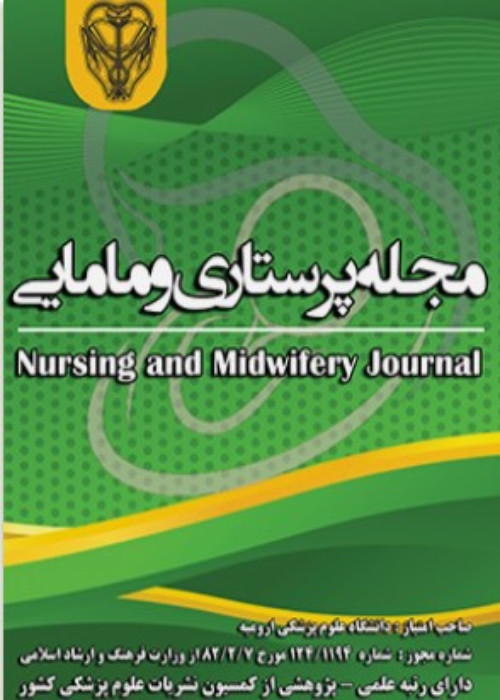ANTENATAL ANXIETY AND PREGNANCY WORRIES IN ASSOCIATION WITH MARITAL AND SOCIAL SUPPORT
Author(s):
Abstract:
Background and Aims
A wide range of psychosocial variables may influence pregnant women's psychological status. However the association between marital and social support, anxiety and worries during pregnancy is a relatively neglected area of research. Therefore, the aim of this study was to examine the relationship between marital support, social support, antenatal anxiety and pregnancy worries after controlling for the effects of background variables.Material &
Methods
In a descriptive cross-sectional study, 214 pregnant women attending in Health Centers for prenatal care in the city of Urmia, Iran were selected using convenience sampling, then they were evaluated using Spielberger state- Trait Anxiety Inventor) STAI). Pregnancy worries were measured with the Cambridge Worry Scale, social support with the Social Support Questionnaire-6 and marital satisfaction with the marital quality scale. Data were analyzed using liner regression and ordinal logistic regression.Results
The average age of participating in the study was 27/62 ± 5/47. 86/4% of women had low concern, and 13/6% had high concern.7% of women had lower-middle anxiety, 22/9% moderate to high anxiety, and 4.44% moderately severe anxiety, and 25.7% had severe anxiety. Low marital satisfaction was significantly related to pregnancy worries(P=0/01).In addition, age )Pvalue=0/07,OR=0/94 , CI=0/88-1/00), gestational age (Pvalue=0/35,OR=2/63, CI= 0/33 20/83)¡ abortion (Pvalue=0/71 ,OR=1/17 ,CI= 0/50 2/73(, education (Pvalue=0/08 , CI=2/60, OR=0/87 7/76) and marital satisfaction(Pvalue=0/05,( OR= 0/98 CI= 0/96 1/00) were significantly related to anxiety. Primiparus in comparison with nulliparus women were significantly related to lower anxiety. And low marital satisfaction was significantly related to anxiety and high social support (SSQ-Network (Pvalue=0/02, OR=1/66 CI= 1/08 2/56) and SSQ-Satisfaction (Pvalue=0/003, OR=1/63, CI= 1/18- 2/26) were significantly related to low anxiety.Conclusion
The risk factors found in this study could help clinicians target anxiety screening to high-risk populations of pregnant women. Health care professionals and midwives in particular should be trained in the detection and management of anxiety and worries during pregnancy .Planning preventive and supportive programs for pregnant women is necessary.Keywords:
Language:
Persian
Published:
Journal of Urmia Nursing And Midwifery, Volume:14 Issue: 6, 2016
Pages:
504 to 515
magiran.com/p1581742
دانلود و مطالعه متن این مقاله با یکی از روشهای زیر امکان پذیر است:
اشتراک شخصی
با عضویت و پرداخت آنلاین حق اشتراک یکساله به مبلغ 1,390,000ريال میتوانید 70 عنوان مطلب دانلود کنید!
اشتراک سازمانی
به کتابخانه دانشگاه یا محل کار خود پیشنهاد کنید تا اشتراک سازمانی این پایگاه را برای دسترسی نامحدود همه کاربران به متن مطالب تهیه نمایند!
توجه!
- حق عضویت دریافتی صرف حمایت از نشریات عضو و نگهداری، تکمیل و توسعه مگیران میشود.
- پرداخت حق اشتراک و دانلود مقالات اجازه بازنشر آن در سایر رسانههای چاپی و دیجیتال را به کاربر نمیدهد.
دسترسی سراسری کاربران دانشگاه پیام نور!
اعضای هیئت علمی و دانشجویان دانشگاه پیام نور در سراسر کشور، در صورت ثبت نام با ایمیل دانشگاهی، تا پایان فروردین ماه 1403 به مقالات سایت دسترسی خواهند داشت!
In order to view content subscription is required
Personal subscription
Subscribe magiran.com for 70 € euros via PayPal and download 70 articles during a year.
Organization subscription
Please contact us to subscribe your university or library for unlimited access!


